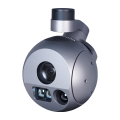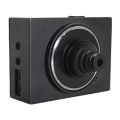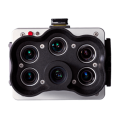- Start
- Critical infrastructure
- Railways
Solutions for railways
Our drone solutions can be used to quickly map and inspect critical rail infrastructure.
Using precise maps, images and video, staff in the sector can gain a detailed picture of key elements of the rail networks, while optimising resources and maintaining safety.
Using precise maps, images and video, staff in the sector can gain a detailed picture of key elements of the rail networks, while optimising resources and maintaining safety.
Key benefits for railways
Managing rail network integrity
Undertaking frequent on-demand inspections to monitor the safety, reliability and integrity of the rail network and associated overhead line, improving performance and eliminating the risk of failure.
- Overhead catenaries extend over long distances, which can be difficult to access and manual inspections can be time-consuming or even physically impossible.
- Defects related to hazards at height – can be overlooked when observing only from the ground.
Drones help manage rail network integrity
- Drones can take off in minutes, covering large areas during each flight, effectively providing useful information.
- Drones help identify threats to the integrity of elements of the rail network and electric traction and inform response actions, providing close-up data as well as comprehensive overviews.
Detailed inspection
Thanks to drones, it is possible to obtain standardised data from automatic inspections that accurately identify faults.
- The inspection staff must inspect and check all tower and traction components, which is very demanding and labour-intensive.
- Traditional inspections are unable to produce structured, standardised data that can be used to automatically detect defects.
Drones conduct detailed inspections
- Automated flight paths can be precisely programmed to inspect high-altitude objects, creating detailed 3D point clouds without risk to operator safety.
- The drones are easy to use, enabling inspection teams to obtain high-quality data with basic training, while standardising output and streamlining processes.
- Inspection processes are closed, ensuring data integrity
Thermal inspection
Obtaining real-time readings of asset temperature using drones equipped with thermal sensors to identify anomalies immediately.
- Thermal inspection equipment on the ground cannot give insight into the condition of tall or inaccessible structures.
- Thermal inspections with helicopters are too costly to be carried out on a mass scale and the long preparation time slows down rescue operations.
Drones support thermal inspections
- The drones can capture the subject from multiple angles and are easy to operate, ensuring that key details are not missed.
- The drones are easy to use, take off in minutes and are not restricted by strict set-up requirements, allowing for a quick response.
- Crews can get visual and real-time temperature readings on all parts of the asset to quickly identify and address problems.
Damage repairs
Drones help to quickly capture the condition of a selected junction of the rail network, from multiple angles using specialised cameras to reveal any faults or defects and address them in a timely manner.
- Serious faults often require immediate repair and manual inspections can cause repair delays that lead to losses.
- Inspection staff must manually search for faults and may be limited by the availability of assets and available tools.
Drones support fault resolution
- Drones provide an aerial perspective that captures critical information regardless of the environment and surroundings, enabling teams to act quickly and minimise losses.
- The drones are easy to operate, take off within minutes, can stay in the air for extended periods of time (the Prometheus H2 drone for up to more than 5 hours) and are not restricted by strict set-up requirements, allowing teams to accurately locate and repair any faults.
Hybrid drone platform 
Dedicated accessories for Inspector and Enterprise models
Similar solutions
for critical infrastructure
for critical infrastructure


Follow us
Contact
-
+48 797 476 054
-
Al.Krakowska 110/114
budynek B-27
02-256 Warszawa









